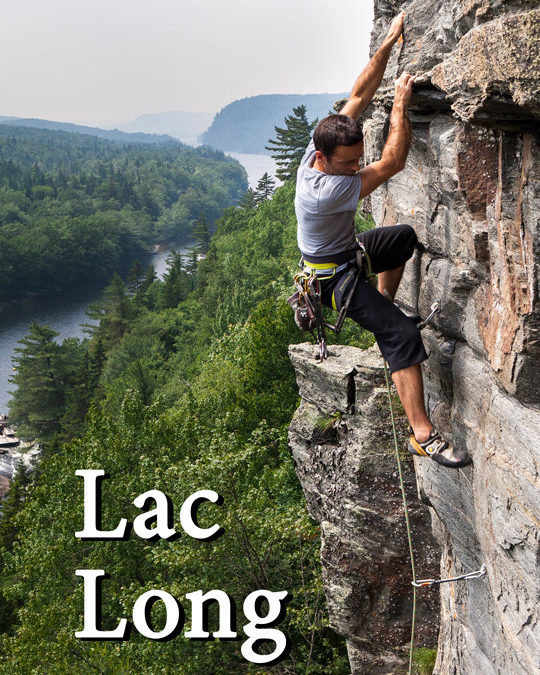
by todd | Jan 29, 2020
Lac Long
by Arian Manchego
Escalade Portneuf Facebook
Un bijou caché dans le coeur de Portneuf, la falaise du lac Long offre une centaine de voies de different styles dans un milieu enchanteur. La majorité des parcours sont en trad ou en mixte mais on y retrouve assez de voies sportives pour meubler quelques visites. Les grimpeurs capables de leader du 5.10 en montant auront plus de choix car pour l’instant le nombre de voies faciles est limité. Dans ce guide nous proposons l’information nécessaire pour s’orienter mais pas plus, afin de préserver un sentiment de découverte et d’aventure. Un rocher excellent, une falaise ensoleillée et mystérieuse, de la baignade et du camping… qu’attendez-vous? ENGLISH : We hope to have an English-language version of the rakkup guidebook available soon.
-

-
Explore Lac Long climbing via our interactive trail map.
-

-
rakkup navigates car to crag then displays a picture when arriving at destination.
-

-
Action photos.
-

-
Filter climbs by grade and type.
-

-
Quickly browse climb details in the climb list.
-

-
Beautiful full screen smart topos.
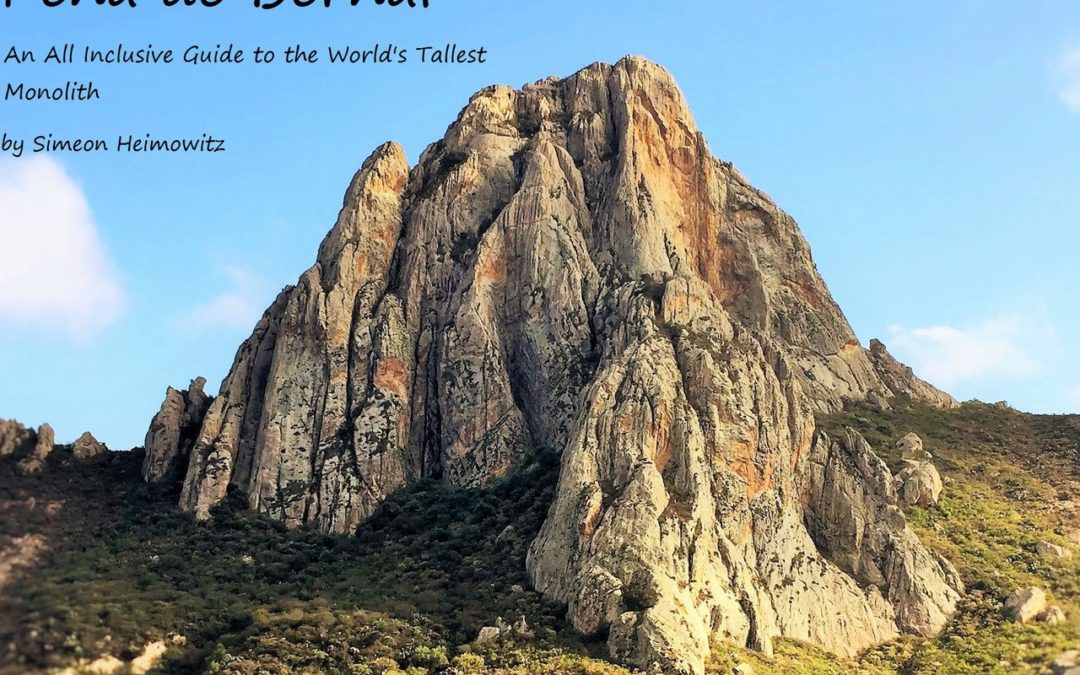
by todd | Jan 10, 2020
Peña de Bernal
by Simeon Heimowitz
Southern Exposure Professional Guide Service
Looking for stellar climbing, pristine weather, beautiful scenery, delicious food and an amazing town to relax in? Come and climb Peña de Bernal. At 7,000 feet in elevation and 1,300 miles North of the Equator the temperature in Central Mexico is perfect for climbing all year round.
This guidebook is the only fully comprehensive guide for La Peña available anywhere. Want to climb long multi pitch routes? Want to go cragging on single pitch routes in the shade all day? Anything and everything regarding Peña de Bernal. is included in this guide.
-

-
Explore Bernal climbing via an interactive trail map.
-

-
rakkup navigates car to crag then displays a picture when arriving at destination.
-

-
Quickly browse and search the climb list.
-

-
Filter climbs by quality, grade and type.
-

-
Smart topos help locate the right climb.
-

-
Beautiful full screen smart topos.
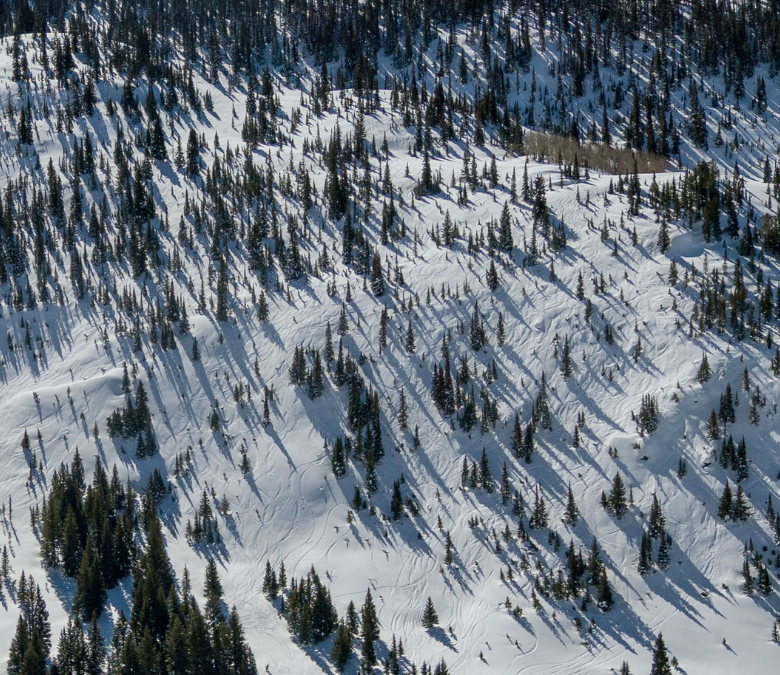
by todd | Oct 15, 2019
Backcountry Skiing: Buffalo Pass, Colorado
Colorado Avalanche Information Center
Beacon Guidebooks:
California: Tahoe Light Tours Colorado: Berthoud | Cameron | CO Light Tours | Crested Butte | Loveland | Marble | Silverton | Stevens New Mexico: Taos Oregon: Hood Washington: Baker | Crystal | ONP | Snoqualmie | Stevens
Buffalo Pass is the mecca for backcountry sled-skiers in the Rockies. Nestled in the Park Range of the Rocky Mountains near Steamboat Springs, it is one of the only places in the world where you can drive 15 minutes from a resort, unload a trailer full of snowmobiles, and have a 55-mile network of maintained snow roads on public lands dedicated to mechanized skiing from mid-December til Gaper Day.
The orientation of Buff Pass makes it favorable for significant orographic snowfall in zonal flow, particularly northwest flow patterns. The frigid air from northwest Colorado adds to the magic of “Fluffalo Pass” by providing consistent light and blower powder all winter long. To top it off, Buff Pass competes with Wolf Creek Pass every season for having the deepest snowpack in Colorado. Buffalo Pass also has access to some of the best tree skiing in the world, varying from widely spaced and naturally gladed aspens in mellow terrain to tight and technical aspens and evergreens guaranteed to test any skier.The area boasts some of the oldest and largest old growth aspens in Colorado.There are several stands on the pass that are renowned for their top to bottom skiing amongst quaking aspens such as Forester’s Aspens, Double A’s, GalaxyTrees, and Quaker Bowl. However, the gem of Buff Pass is Soda Mountain. When the skies rip to blue, locals and tourists alike flock to the highest point on the pass for steep chutes, big drops, and technical terrain in Buff Pass’s deep, world class powder.
Buy digital plus (book and/or map) and the price includes $4.00 for shipping, a screaming deal! When you buy a bundle, you can use your digital rakkup guidebook immediately.
-
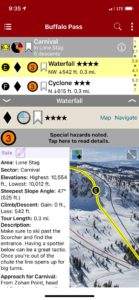
-
List view
-
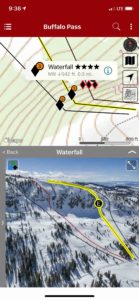
-
Map view
-
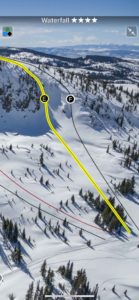
-
Full screen photos
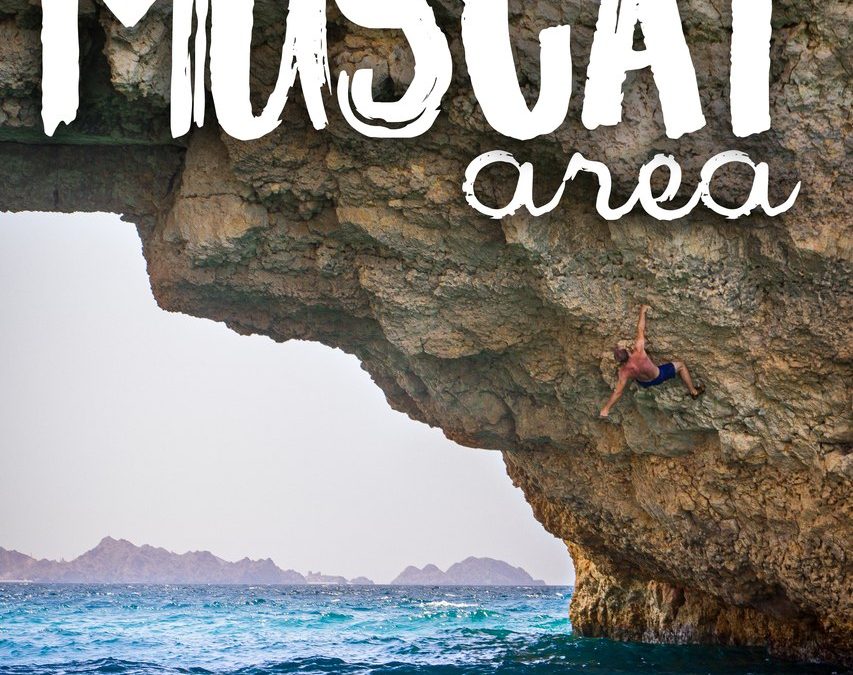
by todd | Sep 24, 2019
Oman: Deep Water Soloing
by Jamie Moss & Larry Michienzi
Climbing in Oman Facebook
Muscat Sport Climbing Guidebook | Sharaf Al Alameyn Sport Climbing Guidebook
Muscat in the Sultanate of Oman might be the only capital city in the world with high quality deep-water soloing within the city limits. DWS makes perfect sense in Muscat with its complex rocky coastline surrounded by a warm calm Indian Ocean. Oman has an enviable climate making DWS a year-round pursuit. This guide details over 200 routes across the three most accessible cliffs developed so far. Some sectors are lowball and bouldery in nature and provide a great introduction to the sport (V0-V7), whereas other are taller and more committing (F5-F8a/5.7-5.13b).
-
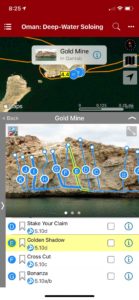
-
Easily locate sectors and climbs.
-
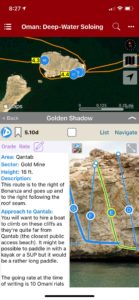
-
Climb details, image and map.
-

-
Searchable climb list.
-
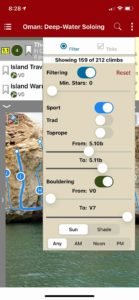
-
Filter based on grade.
-
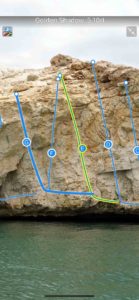
-
Beautiful full screen smart topos.
-
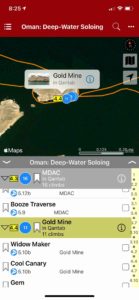
-
Explore Oman: Deep Water Soloing with rakkkup’s trail map.
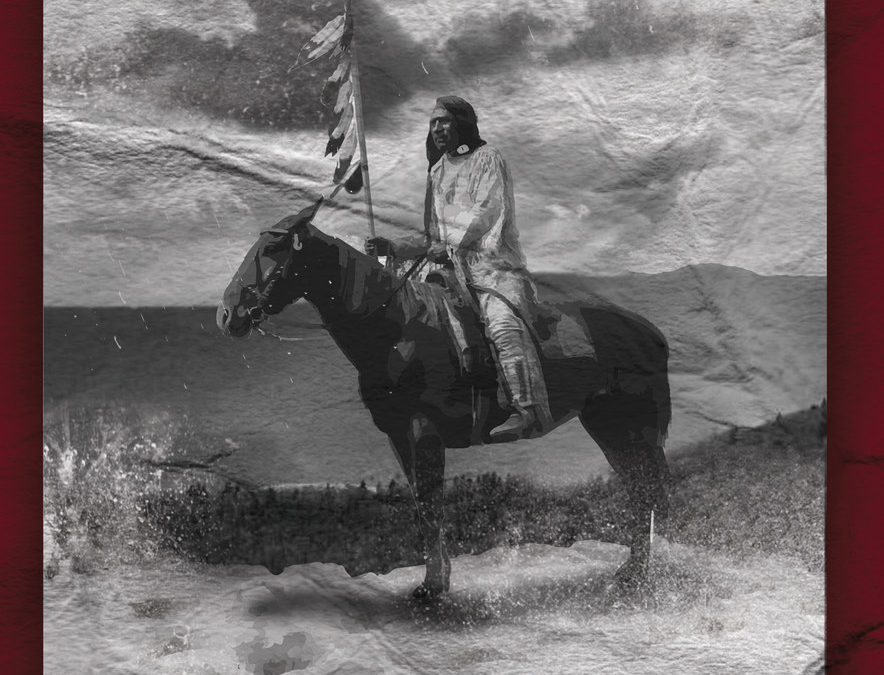
by | Aug 21, 2019
Horse Pens 40 Bouldering
by Adam Henry
Published by Rockery Press
Sculpted by the ravages of time, Horse Pens 40 is home to acres of bulbous faces, blunt prows, delicate slabs, crimpy overhangs, and water grooves. The owners, Mike and Gina Schultz, are models for southern hospitality. Mike is one of the best storytellers you will ever meet, while Gina slings some of the meanest country cooking you will ever encounter. HP provides the maximum amount of problems for the least amount of effort. If you are in search of the double digit line, you might want to “go west young man,” because the area lacks the soft sends needed to pad the spraycard. With over 100+ lines from V3-V5 and the same amount from V6-V8, this is the moderate climbers dream come true. Horse Pens is the Fontainebleau of the South, without the arrogance and the stench. Either for a day, a week, or a season, your trip to HP will have you wanting of more. If the weather permits, this is as good as it gets.
-
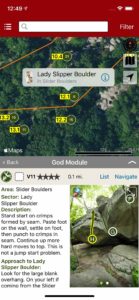
-
Explore Horse Pens 40 bouldering via an interactive trail map.
-
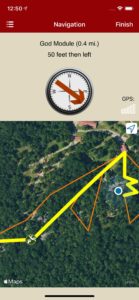
-
rakkup navigates car to boulder then displays a picture when arriving at destination.
-
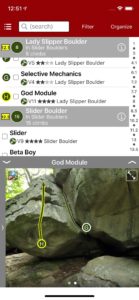
-
Smart topos help locate the correct problem.
-
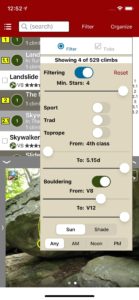
-
Filter problems by quality and grade.
-
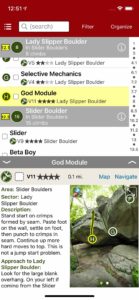
-
Quickly browse or search boulder problems in the problem list.
-
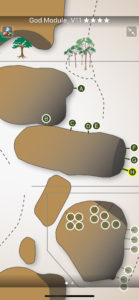
-
Beautiful full screen smart topos.
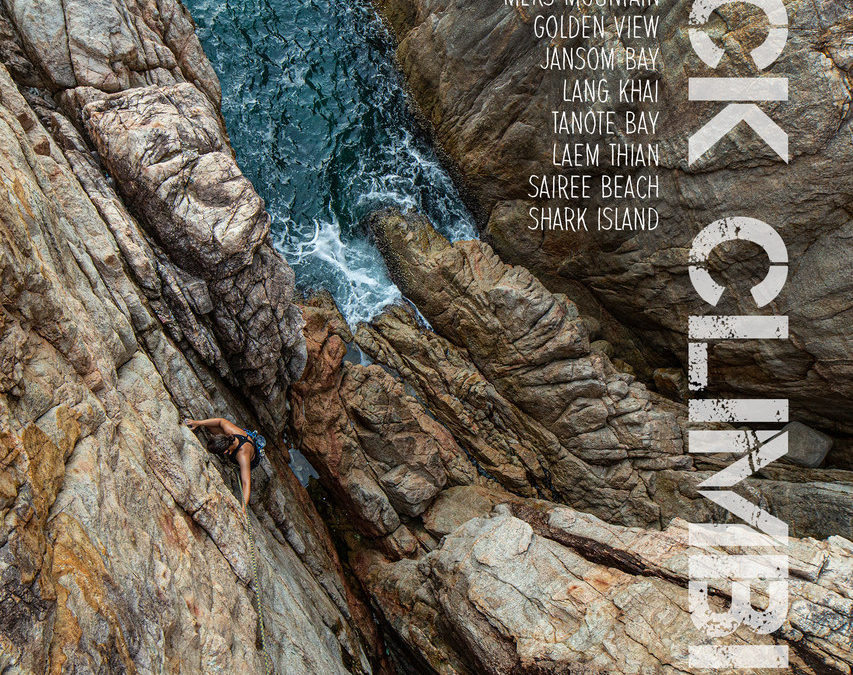
by todd | Jul 1, 2019
Koh Tao Rock Climbing
by Kelsey Gray
Hatcher Pass Rock Climbing
A guidebook for the small but concentrated island of Koh Tao. The island is known for its diving but is becoming more popular with climbers as they discover its granite cliffs and boulders. This guidebook includes most of the rock climbs on the island with 180 routes.
-
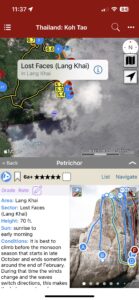
-
Map view
-
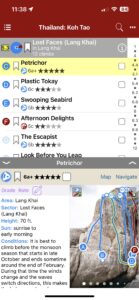
-
List view
-
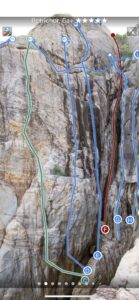
-
Full screen topos
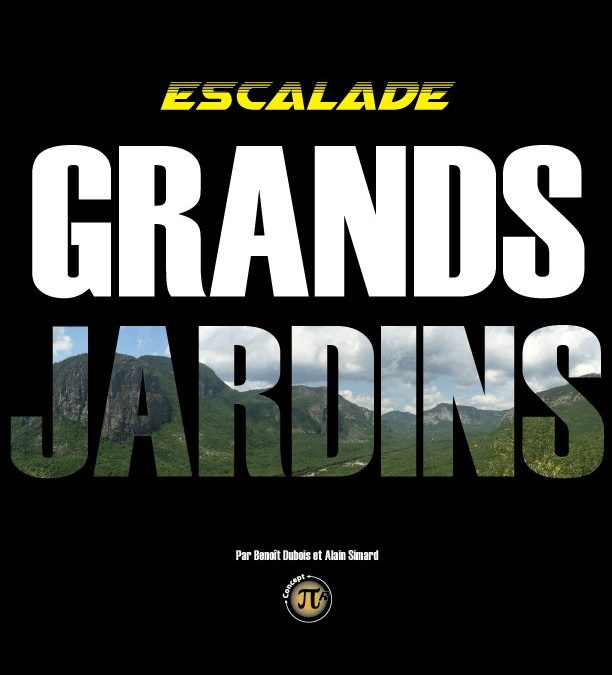
by todd | May 17, 2019
Québec: Escalade Parc des Grands-Jardins
by Benoit Dubois et Alain Simard
Le Parc des Grands-Jardins et la Zec des Martres est un terrain d’aventure dépaysant à 15 minutes de St-Urbain. Venez grimper des voies mémorables dans un environnement grandiose! La nouvelle version du topo sur rakkup contient 130 voies (+ de 300 longueurs de corde), 160 photos (120 nouvelles) et des informations détaillées sur les différentes voies, dont 23 nouvelles. Cette App nous permettra de faire des mises à jour régulières sans avoir à tout renuméroter et refaire la mise en page du texte et des photos manuellement comme auparavant. D’un simple clic, vous pourrez télécharger une mise-à-jour. Impossible de se perdre grâce aux cartes GPS, vous pourrez accéder sans tarder à vos projets! La quasi-totalité des voies est en escalade traditionnelle en multi-longueurs. On compte 7 voies d’escalade sportive et 3 courtes voies de moulinette pour les enfants/débutants.
-

-
Explore Grands-Jardins via our interactive trail map.
-

-
rakkup navigates car to crag then dispalys a picture when arriving at destination.
-

-
Action photos!
-

-
Filter climbs by grade and type.
-

-
Quickly browse climb details in the climb list.
-

-
Beautiful full screen smart topos.
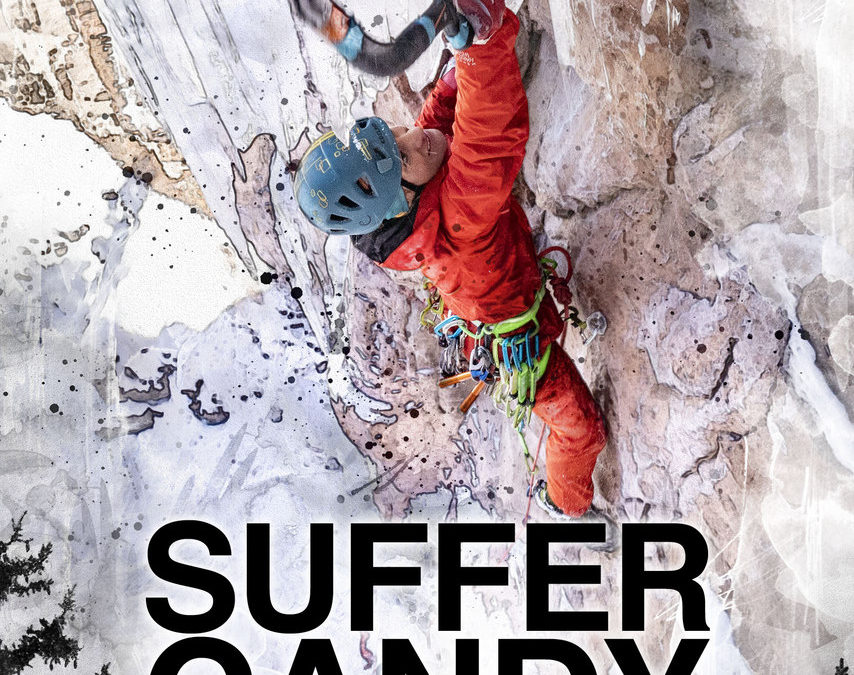
by todd | Mar 6, 2019
SUFFER CANDY VOLUME 2
by Jason Nelson
Visual Adventures | Suffer Candy Volume 1 | Climbs of the Million Dollar Highway
This guidebook covers ice, mixed and drytooling routes in Western Colorado. Climbs around the following locations are included; Grand Junction, Parachute, Rifle, Glenwood Springs, Aspen, Redstone, Blue Mesa, Crested Butte, Unaweep Canyon, and Lake City.
-
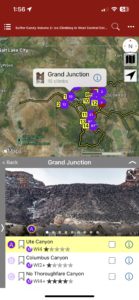
-
Map over Sector
-
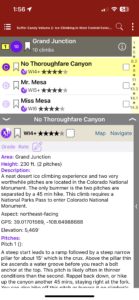
-
LIst over description
-
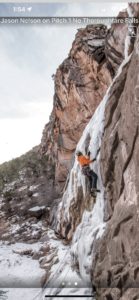
-
Full screen image
-
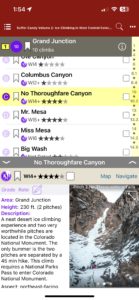
-
List, description, image
-
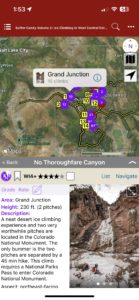
-
Map, Description, Image
-
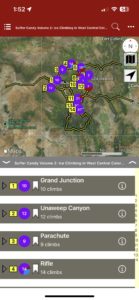
-
Map Sector
Price includes domestic US shipping for digital plus book bundle.
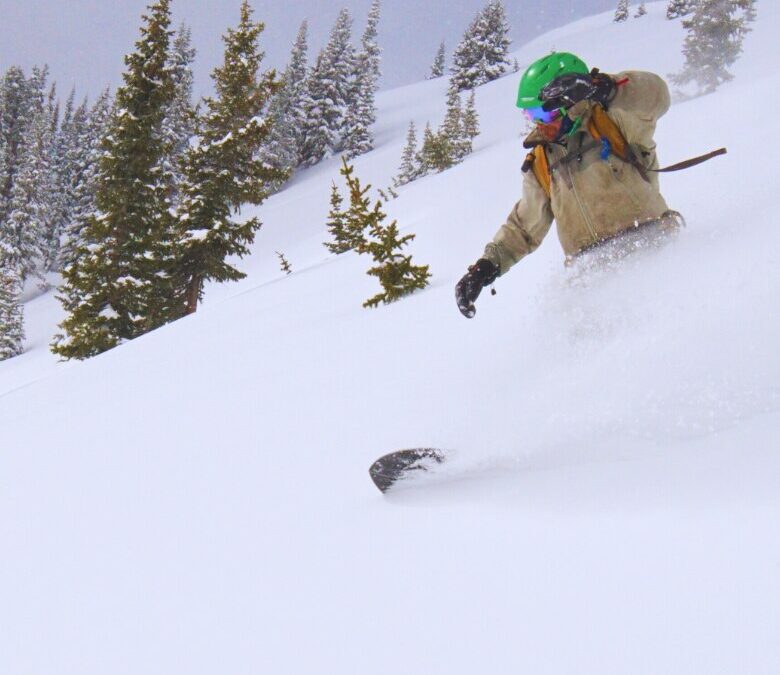
by todd | Feb 6, 2019
Backcountry Skiing: Marble, Colorado
by Beacon Guidebooks
Colorado Avalanche Information Center
Beacon Guidebooks:
California: Tahoe Light Tours Colorado: Berthoud | Buffalo | Cameron | CO Light Tours | Crested Butte | Loveland | RMNP | Silverton New Mexico: Taos Oregon: Hood Washington: Baker | Crystal | ONP | Snoqualmie | Stevens
Welcome to Marble, Colorado: Out of the way, isolated at a dead-end, and full of snow. In this guide you will find more than just ski lines. You’ll find helpful up-to-date information about road maintenance, snowmobile advice, parking systems and trailhead info. We explain the relationship with the quarry, discuss skin track etiquette, and of course, we provide reliable avalanche terrain information.
-
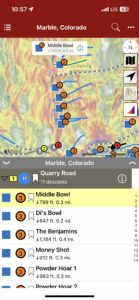
-
Map view
-
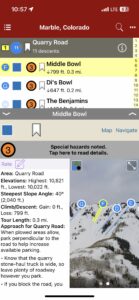
-
List view
-
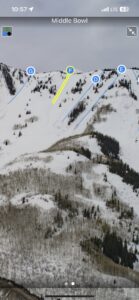
-
Full screen photos
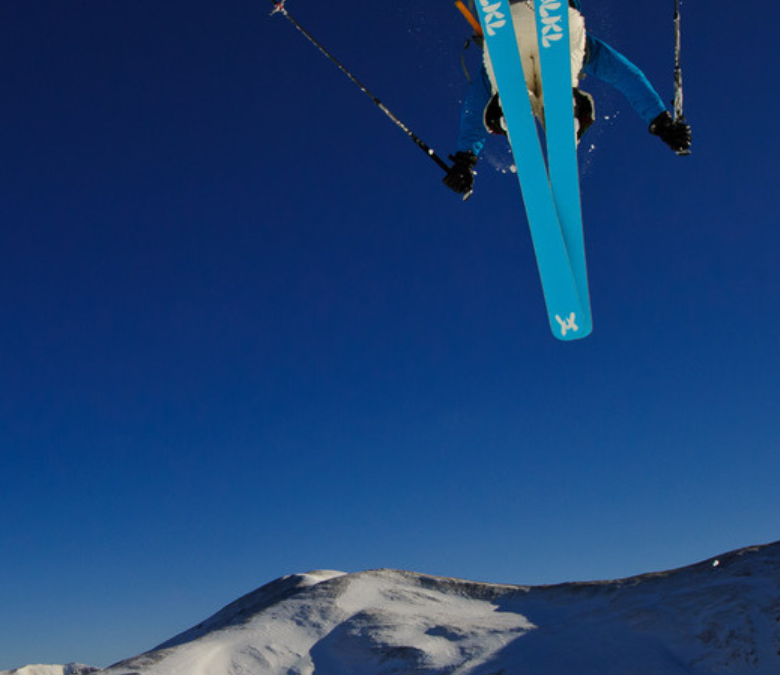
by todd | Jan 4, 2019
Backcountry Skiing: Loveland Pass, Colorado
by Rob Writz
Colorado Avalanche Information Center
Beacon Guidebooks:
California: Tahoe Light Tours Colorado: Berthoud | Buffalo | Cameron | CO Light Tours | Crested Butte | Marble | RMNP | Silverton New Mexico: Taos Oregon: Hood Washington: Baker | Crystal | ONP | Snoqualmie | Stevens
Join us this winter to unlock new terrain on Loveland Pass. From Watrous Gulch to Porcupine Gulch, we follow US Highway 6 as it climbs dramatically to 11,990 feet; providing trailhead access to glacial valleys holding a lifetime of winter backcountry exploration. Download the Loveland Pass guidebook to get access to 23 zones and 165 named runs. Featuring ascent routes, descent descriptions, max slope angles, a trail map, offline GPS navigation and much more, this app helps your terrain management, tour planning and route finding. Check out the new foldable, waterproof trail map from Beacon Guidebooks too!
Buy digital plus (book and/or map ) and the price includes $4.00 for shipping, a screaming deal! When you buy a bundle, you can use your digital rakkup guidebook immediately.
-
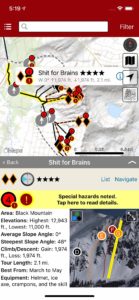
-
Map view
-
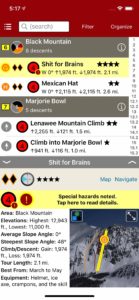
-
List view
-
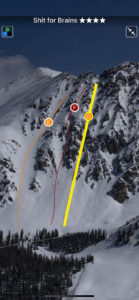
-
Full screen photos


























































